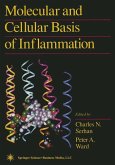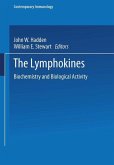In this first book dedicated entirely to the ELISPOT, a critical enzyme-linked immunospot assay used widely in biomedical research, recognized experts with first-hand experience detail how to design, perform, and analyze these assays. The readily reproducible techniques they provide cover a wide variety of topics, including the use of membrane-backed plates, the standardization and validation procedures, the removal of cells from ELISPOT plates, cell separation techniques, and the quantification of ELISPOT data. There are also numerous ELISPOT applications involving animal models, human cells, measles, multiple sclerosis, immune responses, multicytokine detection systems, and immunocytochemistry. Highlights include dual-color and multiplex ELISPOT assays, use of the ELISPOT assay on feline lymphocytes, standardization of the ELISPOT procedure, and combining the ELISPOT assay with immunohistochemistry. Although the ELISPOT (enzyme-linked immunospot) assay is widely used in many fields of biomedical research, producing recognizable and quantifiable spots may be very difficult not only for beginners, but also for experienced researchers. In Handbook of ELISPOT: Methods and Protocols, the first book dedicated entirely to the ELISPOT, recognized experts with first-hand experience detail how to design, perform, and analyze these assays. The readily reproducible techniques they provide cover a wide variety of topics, including the use of membrane-backed plates, the standardization and validation procedures, the removal of cells from ELISPOT plates, cell separation techniques, and the quantification of ELISPOT data. There are also numerous ELISPOT applications involving animal models, human cells, measles, multiple sclerosis, immune responses, multicytokine detection systems, and immunocytochemistry. Highlights include dual-color and multiplex ELISPOT assays, use of the ELISPOT assay on feline lymphocytes, standardization of the ELISPOT procedure, and combining the ELISPOT assay with immunohistochemistry. The protocols follow the successful Methods in Molecular Biology series format, each offering step-by-step laboratory instructions, an introduction outlining the principle behind the technique, lists of the necessary equipment and reagents, and tips on troubleshooting and avoiding known pitfalls.
Comprehensive and highly practical, Handbook of ELISPOT: Methods and Protocols offers both novice and experienced researchers a wealth of easy-to-understand information that will clarify the technically challenging aspects of ELISPOT and open the door to its wider successful use.
Comprehensive and highly practical, Handbook of ELISPOT: Methods and Protocols offers both novice and experienced researchers a wealth of easy-to-understand information that will clarify the technically challenging aspects of ELISPOT and open the door to its wider successful use.
From the reviews:
"The book is divided into four sections, with a total of 20 chapters featuring step-by-step protocols that will enable both novice and experienced researchers to perform ELISPOT. Each chapter begins with a general Introduction, followed by a detailed Materials section and an easy-to-follow Methods section ... . All the chapters are equally interesting and well presented ... . a must for a cytochemist. This book will serve as a convenient reference manual for beginners and for experienced ELISPOT users." (Carlo Alberto Redi, European Journal of Histochemistry, December, 2005)
"The book is divided into four sections, with a total of 20 chapters featuring step-by-step protocols that will enable both novice and experienced researchers to perform ELISPOT. Each chapter begins with a general Introduction, followed by a detailed Materials section and an easy-to-follow Methods section ... . All the chapters are equally interesting and well presented ... . a must for a cytochemist. This book will serve as a convenient reference manual for beginners and for experienced ELISPOT users." (Carlo Alberto Redi, European Journal of Histochemistry, December, 2005)








